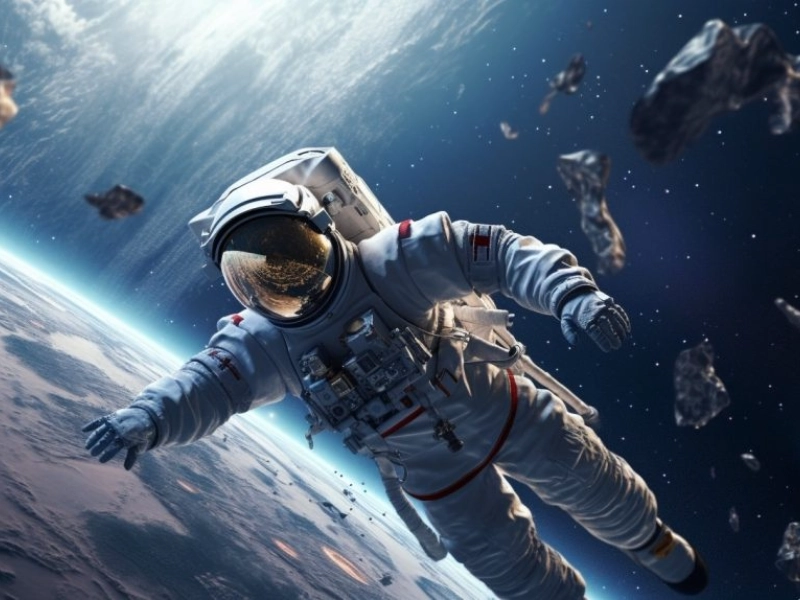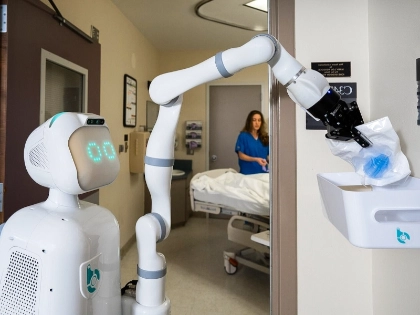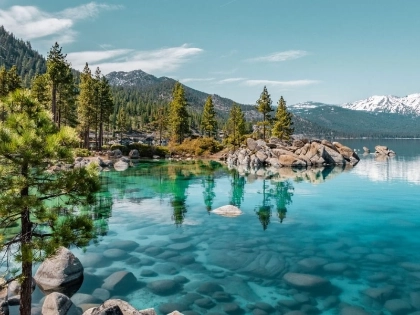The Future of Space Exploration: What Lies Ahead?
The majority of Americans still think that NASA, the federal space agency, ought to keep playing a vital role in space exploration. Nonetheless, many manned flights in the future may be led by private enterprises like SpaceX, Richard Branson's Virgin Galactic, Blue Origin, and Amazon CEO Jeff Bezos. Nowadays, a lot of organisations want to put robotic spaceflight ahead of human spaceflight. NASA's Curiosity rover, which has been studying the surface of Mars since 2011, is one example.

Deep Space Investigations
Ever since humanity first laid eyes on the night sky, space exploration has captivated their imaginations. It is now possible to send people, plants, and animals above Earth's atmosphere thanks to advancements in electronics and rocketry. Telescopic and physical missions will both be a part of the planned space exploration programme. Satellites and probes will be used in the former, and crewed spacecraft will be used for orbital and landing missions in the latter. Robust and human missions both face difficulties due to the great distances involved in deep space exploration. Real-time guidance is limited by the hours or days it can take to communicate with Earth. Furthermore, materials for spacecraft must be resistant to radiation and micrometeoroids due to the harsh environment in orbit. To cover those long distances, effective propulsion systems will also be needed. It is also necessary to take into account biological and physiological factors, such as how isolation and low gravity affect human performance.
Transportable Interstellar Vehicles
Even if interstellar travel fueled by fusion is someday able to approach the speed of light, it would still take hundreds of years to get to nearby stars. The passengers will have to endure a protracted period of boredom and possibly extinction if the destination is far distant. The story of the spacecraft Minerva serves as an example of the challenges that could arise during a human space mission to a different star. Even though medical advancements may allow passengers to live for thousands of years, the journey will still be hazardous and tiresome. The only practical answer that comes to me are generation ships. For example, Kim Stanley Robinson's book Aurora tracks a generation ship as it travels to the Tau Ceti star system, which is just 12 light-years away from Earth. However, there are odd, alien planets in that system with unfavourable environments for life.
Human-Over-Robotic Spaceflight
Robots continue to do the majority of space exploration, and this will not change. But robots won't take the place of people. The explanation is straightforward: in order to explore new ground, explorers must be driven both rationally and emotionally. Even with all of the advancements in robotics, no robot can yet undertake field research with the same degree of agility and flexibility as an astronaut. For instance, the rovers on Mars are able to adapt as they go over rocky terrain. Furthermore, when robotic capabilities advance, they will be able to plan landing zones, scout ahead, and travel to areas that would be dangerous for people. Robots are also used by space agencies to do labor-intensive and hazardous research activities in orbit, such as station maintenance and small-scale microgravity experiments. Robotic and human space missions will coexist in the future of space exploration.
Creating Colonies on Different Worlds
Ever since the Soviet Union launched Sputnik on October 4, 1957, people have searched for new homes beyond our planet. Since the 1920s, when Austro-Hungarian rocket scientist Herman Potocnik envisioned a circular spacecraft that would rotate to create artificial gravity and use a large concave mirror to focus sunlight for energy, there has been talk of space colonies, where permanent residents could live off the resources of other worlds. For commercial and environmental concerns, the National Space Society is among the many private sector organisations that support the colonisation of other planets. Some dreamers suggest that exoplanets that resemble Earth and are orbiting other stars could be possible sources of food, energy, and water. But when humanity expands further into the solar system, they'll require more than simply water. They will require a space economy or something like to sustain them.
News about Space Technology
On the International Space Station, located 240 miles above Earth, people have lived in constant presence for the last 20 years. However, the Moon is a significantly more distant goal than Mars, and astronauts there would have to wait a lot longer to return home in the event of an emergency. Travel between planets can become more affordable with new technology. Dawn Aerospace is one such, a firm that constructs high-performing, non-toxic propulsion thrusters for satellites of all sizes and same-day reusable launch vehicles. Most Americans, regardless of party affiliation, still support NASA's exploration efforts. Indeed, 65% of Republicans and Democrats agree that it is critical for the US to lead the world in space exploration. On the other hand, some individuals favour private enterprises like SpaceX or Blue Origin leading the way in manned space flights.








